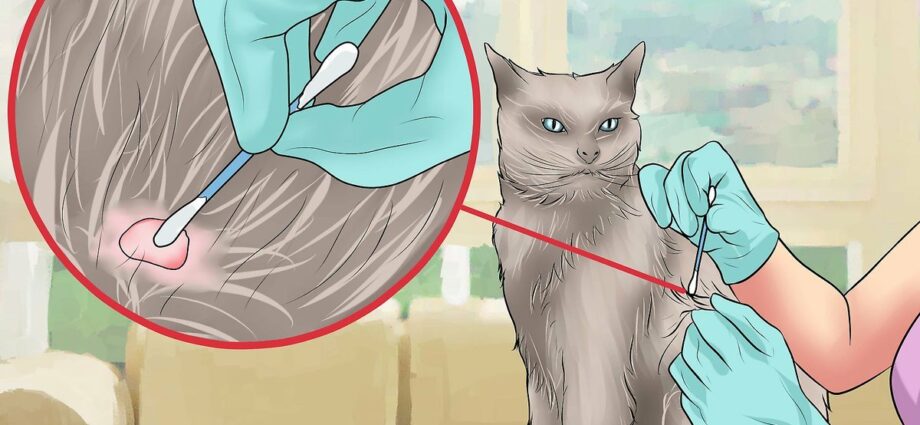Contents
Cat ticks: how do I remove ticks from my cat?
Ticks are common parasites of our pets. Cats catch them outdoors, walking through grass. The tick will then attach to the cat and feed on a small amount of blood. Beyond the mechanical role of the bite, the risk for the cat is especially that of the transmission of diseases by an infected tick. This is why it is important to protect your cat with the help of a suitable antiparasitic treatment, and to act quickly when you notice a tick on your animal.
General information on ticks in cats
Ticks are mites that infect almost all vertebrates. Their size varies according to the species, their age and their sex, from a few millimeters to several centimeters. They are dark in color, varying from beige to black.
Like fleas, ticks mostly live freely in the environment. They only climb on the animal once per stage to make a single meal necessary for their moult, or for laying. Their body will then swell when they feed on blood. Spawning then takes place on the ground and the female dies after spawning.
In cats, as in many other animals, ticks have both direct and indirect pathogenicity. First, a tick bite creates a sore that can become infected and be painful. In addition, the action of a large number of ticks at the same time can cause anemia in cats.
Finally, ticks have a role in the transmission of several serious diseases in cats, such as anaplasmosis or lyme disease.
Ticks are mainly active from spring to fall, but due to global warming, more and more ticks can be found in winter. It is therefore important for our cat to keep effective protection all year round.
How to remove a tick?
When you spot a tick on your animal, you will have to remove it as quickly as possible to prevent it from transmitting disease to your animal. If it is removed in less than 24 hours, the risk that it transmits a bacteria, a virus or a parasite to its cat is practically nil.
It is important not to want to put the tick to sleep or kill it before it is removed. Indeed, the use of a product on the tick may tend to make it vomit. If she is still tied, then there is a high risk of her transmitting a disease to her cat.
Ticks have a thick, solid rostrum. At the end of their head, they have two large hooks, which they will make penetrate into the skin of the cat that they bite. It is these hooks that allow them to stand firmly attached to their victim’s skin.
To remove the tick, all you have to do is make it let go of these two hooks. To do this, you have to catch it using tick tweezers or tweezers and turn it until it retracts its hooks and detaches itself from the cat. It is important not to pull on the tick, because there is a risk of breaking it. The rostrum would then remain attached to the cat, which would make a gateway for germs and could cause infection. If this happens, you must then go to your veterinarian so that he can remove the rostrum and the hooks that have remained attached.
If the tick has been removed correctly, it is sufficient to disinfect the bite area with a conventional disinfectant such as betadine or chlorhexidine. The bite area should be monitored for progress until it is completely healed, within 24 to 48 hours. If the cat ever seems sore or the bite area appears red or swollen, see your vet.
Prevent tick infestation
As often, the best way to fight against flea-related problems is prevention. It is advisable to treat your cat all year round since ticks are active almost every month.
External antiparasitics exist in several forms:
- pipettes spot-on ;
- necklace ;
- shampoo, spray;
- tablets;
- etc.
The formulation chosen must be adapted to the animal and its way of life. For example, collars are not necessarily recommended for cats who go out unattended because they could tear themselves off or hang themselves with them. Collars generally protect for 6 to 8 months. Most pipettes and tablets, on the other hand, effectively protect your cat for a month. It will therefore be necessary to renew the application regularly. Recently, new formulations have entered the market offering protection for 3 months.
It is important to note that most of these products kill ticks but do not repel them. Thus, once treated, it is possible to see ticks wandering in the coat of his animal. The product will have diffused into the top layer of the skin, and will kill the tick quickly after it has started to feed. The dead tick will dry out and then detach itself from the cat’s body. With appropriate treatment, ticks die quickly enough that they do not have time to inject their saliva, and therefore any microbes they carry.










